1. Overview
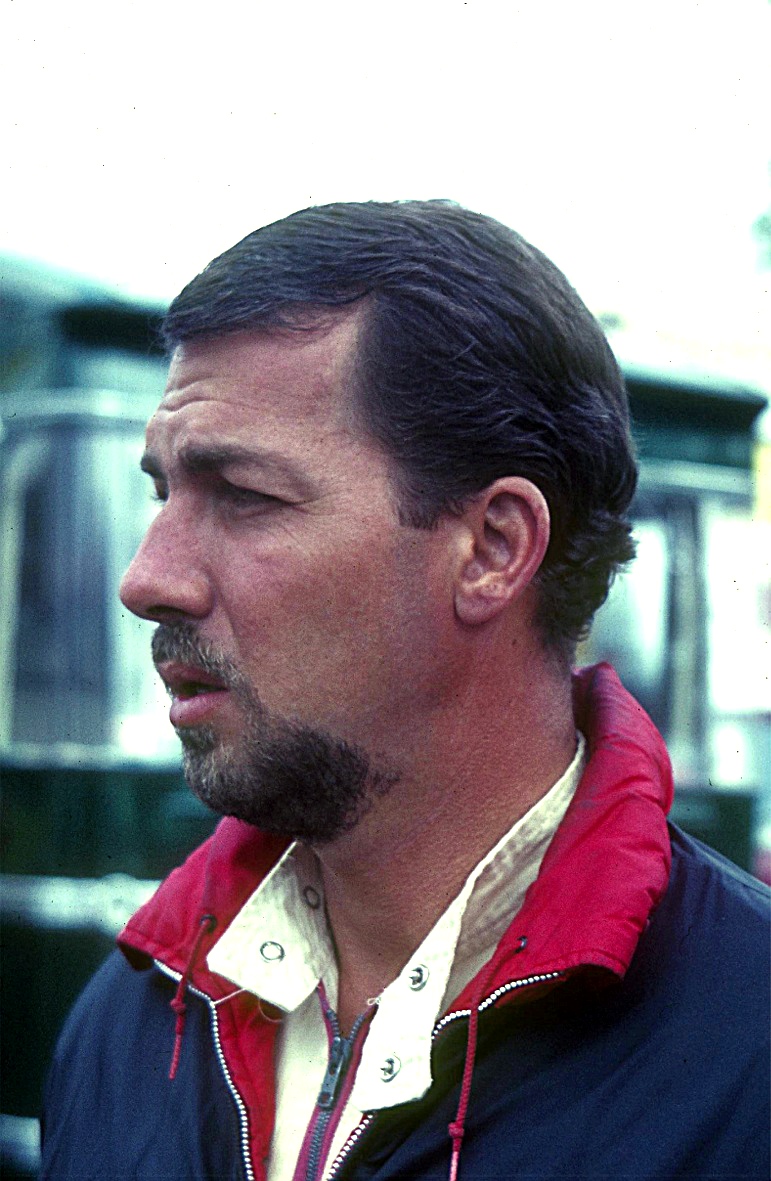
Karl Jockum Jonas "Joakim" Bonnier, widely known as Jo Bonnier (31 January 1930 - 11 June 1972), was a distinguished Swedish racing driver and a significant motorsport executive. Competing in Formula One from 1956 to 1971, he became the first Swedish Formula One Grand Prix winner with his victory at the 1959 Dutch Grand Prix while driving for BRM. Beyond his driving career, Bonnier was instrumental in the sport's development, notably serving as chairman of the Grand Prix Drivers' Association (GPDA) and advocating for crucial safety improvements in motor racing.
Born into the affluent Bonnier family in Stockholm, Bonnier was recognized for his intellectual prowess, multilingualism, and sophisticated approach to racing. His career spanned Formula One and various prestigious sports car racing events, including multiple entries at the 24 Hours of Le Mans where he achieved a best finish of second place in 1964. He also managed his own racing teams, demonstrating an entrepreneurial spirit within motorsport. Bonnier's life was tragically cut short in a fatal accident during the 1972 24 Hours of Le Mans, leaving a legacy as a pioneering Swedish driver and a leading voice for driver safety.
2. Early Life and Background
Joakim Bonnier's early life was marked by a privileged upbringing and a strong emphasis on education, which shaped his intellectual approach that later became evident in his racing career.
2.1. Childhood and Education
Karl Jockum Jonas Bonnier was born in Stockholm, Sweden, into the wealthy and influential Bonnier family. His father, Gert Bonnier, was a distinguished professor of genetics at the University of Stockholm, while many other family members were prominent figures in the publishing business, controlling the eponymous Bonnier Group. From a young age, Bonnier exhibited a keen intellect, mastering six languages. Although his parents had aspirations for him to pursue a career in medicine, he initially harbored ambitions of joining the family's publishing enterprise. To this end, he spent a year at Oxford University studying languages, followed by a period in Paris, France, where he intended to gain experience in publishing.
2.2. Early Racing Beginnings
Bonnier's passion for speed and competition began early. At the age of 17, he commenced his competitive racing career in Sweden. His initial forays into motorsport involved two-wheel racing on an old Harley-Davidson motorcycle. Following his time in Paris, he returned to Sweden in 1951, where he subsequently participated in several rallies as the owner of a Simca. His early experiences, particularly in the Nordic environment, were said to have honed his driving instincts, making him especially proficient on icy conditions.
3. Major Motorsport Career
Jo Bonnier's professional career was extensive, encompassing both Formula One and a significant presence in sports car racing, where he achieved notable successes.
3.1. Formula One
Jo Bonnier's Formula One journey spanned over a decade and a half, marking him as a persistent and pioneering driver in the sport's early history, especially as the first Swede to win a Grand Prix.
3.1.1. Debut and Early Challenges
Bonnier made his Formula One debut in 1956 at the season-ending 1956 Italian Grand Prix, driving for Maserati. As one of the few Nordic drivers in F1 at the time, his presence was notable, though his debut race ended in retirement. The following year, 1957, saw him compete in four races, but he struggled with reliability, retiring from three of them and managing a seventh-place finish in the opening 1957 Argentine Grand Prix.
In 1958, Bonnier initially continued to race for privateer Maserati teams, but success remained elusive. His career nearly concluded in September of that year during a non-championship race at the Imola Circuit. Driving a 1500cc Maserati, he recovered from a poor start and was rapidly gaining on the leader. However, as he navigated a fast corner, another car abruptly moved into his path, causing him to lose control. His Maserati struck a large rock, launching it into the air. The other car passed beneath him as his vehicle flipped multiple times. His competitor's crash helmet even made contact with Bonnier's as his car inverted. The Maserati ultimately landed on its side before skidding 75 ft (23 m) into a ditch, where it came to rest against a pole. Bonnier was ejected from the car, sustaining a concussion, several cracked ribs, and a broken vertebra, with his car being completely destroyed. Despite this harrowing incident, his fortunes began to change later in the 1958 season when he was invited to join the BRM works team. In only his second race with BRM, the final race of the season at the 1958 Moroccan Grand Prix, he secured a commendable fourth-place finish, earning his first Formula One points.
3.1.2. BRM and First Grand Prix Victory
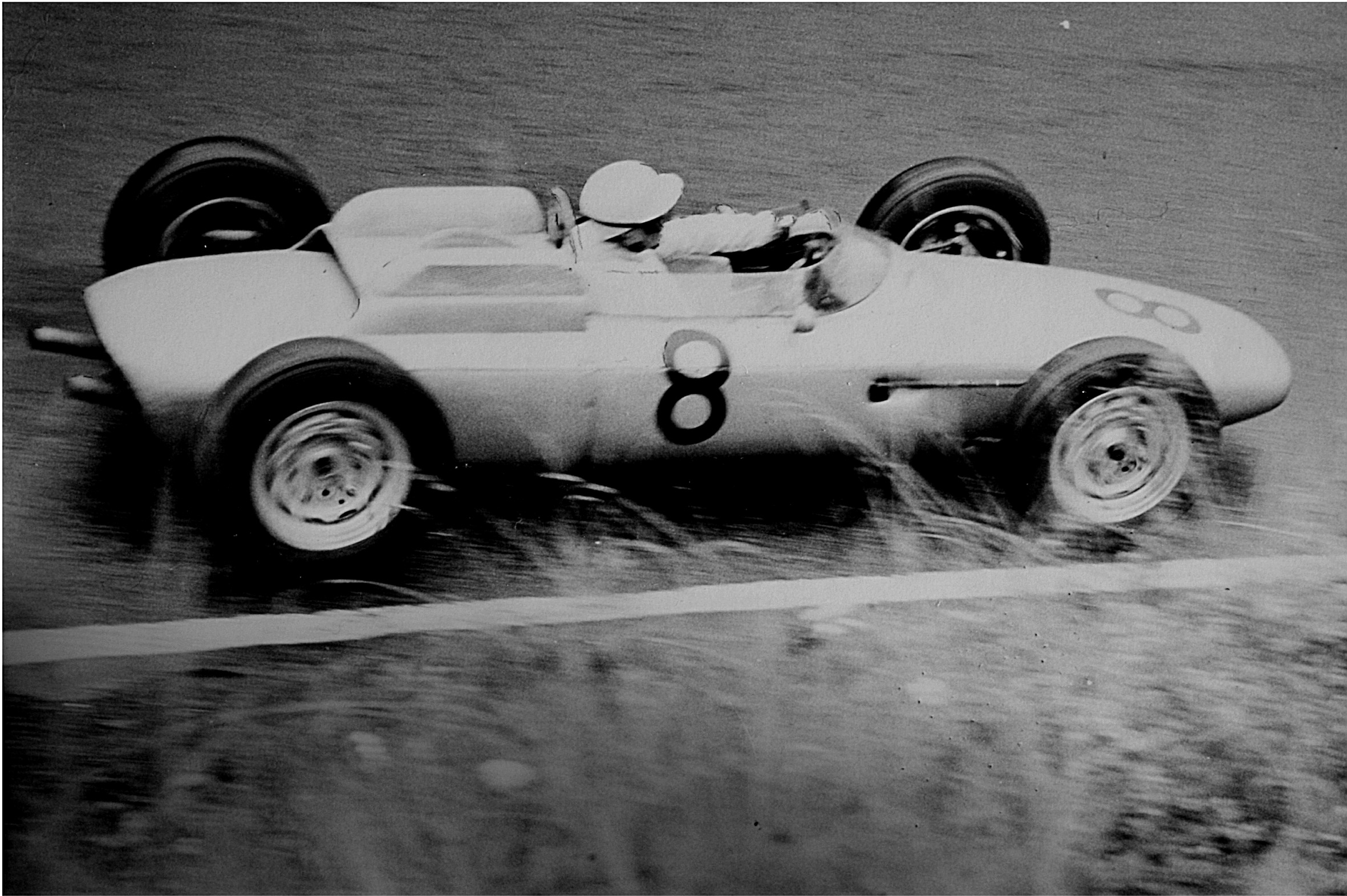
Bonnier's most significant achievement in Formula One came in 1959. Driving for BRM at the 1959 Dutch Grand Prix at Zandvoort, he secured pole position in qualifying. The race itself saw multiple lead changes, but Bonnier ultimately managed to convert his pole into a victory, achieving a historic pole-to-win for both himself and the BRM team. This win marked his and BRM's inaugural Formula One victory and would remain his sole Grand Prix win and podium finish throughout his F1 career. Despite this triumph, the notoriously unreliable BRM hampered his subsequent results, and he finished the season with only one more points finish (fifth place).
3.1.3. Porsche and Privateer Teams
After his breakthrough with BRM, Bonnier continued to race for the team in 1960, achieving two fifth-place finishes. From 1961 to 1962, he competed with Porsche, securing one fifth and one sixth-place finish in each season. When Porsche withdrew from Grand Prix racing at the close of the 1962 Formula One season, Bonnier transitioned to the Rob Walker Racing Team, a renowned privateer outfit famous for achieving World Championship victories. During his tenure with Rob Walker from 1963 to 1965, driving Coopers and Brabhams, he consistently scored points, notably finishing fifth in the 1963 Belgian and Mexican Grands Prix, and sixth in the 1963 German and 1964 Austrian Grands Prix.
In 1966, Bonnier re-established his own team, initially named Anglo-Suisse Racing Team, later renamed Ecurie Bonnier. However, his engagement in Formula One gradually waned. His last full season was 1968, during which he replaced his aging Cooper T86 with an older McLaren. He continued to make occasional appearances in Formula One races until 1971, when he made his final F1 start at the 1971 United States Grand Prix.
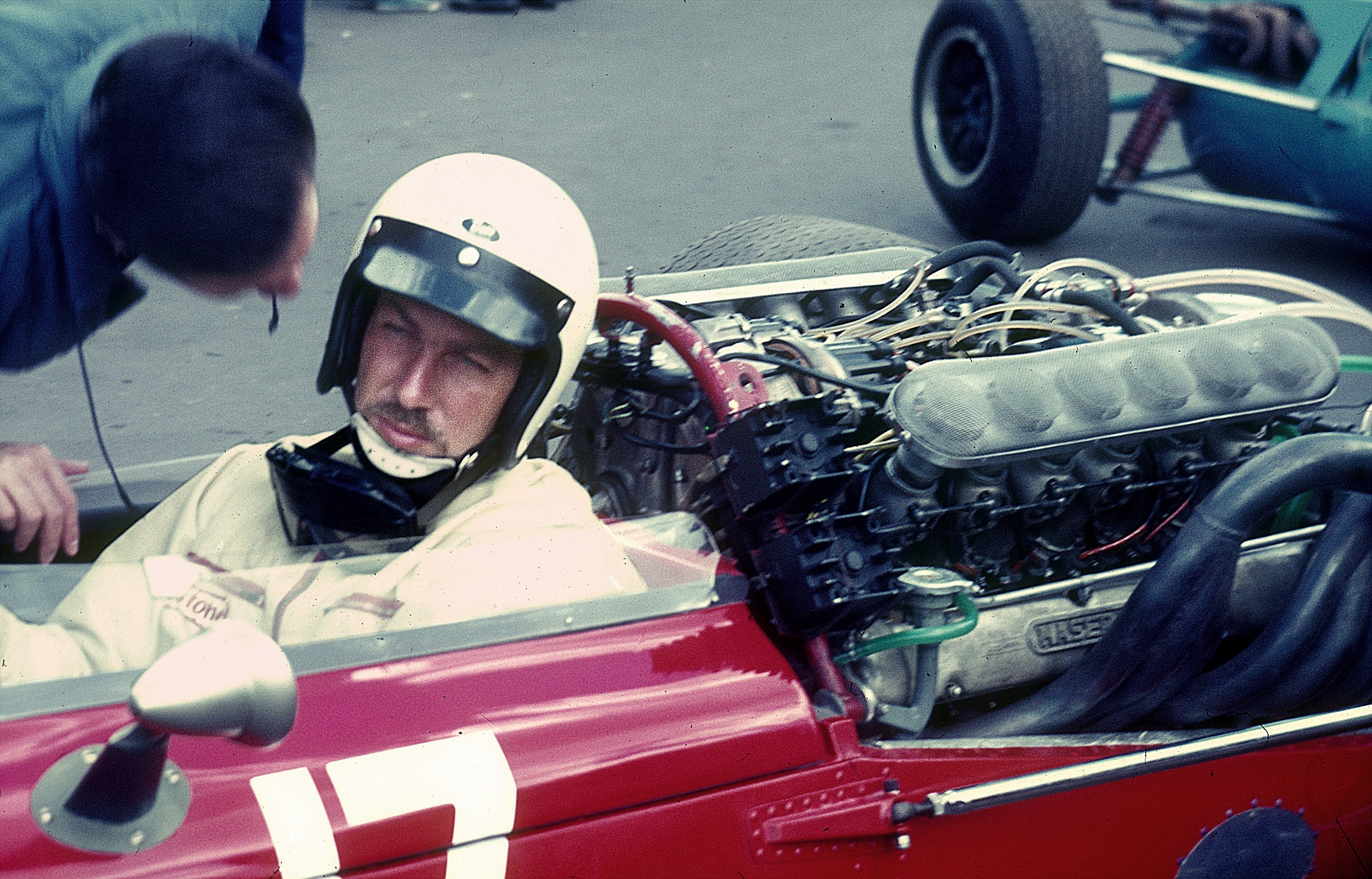
3.1.4. Involvement in "Grand Prix" Film
In 1966, Jo Bonnier played a significant role as a racing advisor for the acclaimed motor racing film Grand Prix, directed by John Frankenheimer and starring James Garner. He worked alongside other notable American racing drivers such as Phil Hill, Richie Ginther, and Carroll Shelby. All these professional drivers, including Garner who performed much of his own driving, were employed to execute the film's intense racing scenes. During the filming of the 1966 Belgian Grand Prix at the notoriously challenging and fast Spa-Francorchamps Circuit, Bonnier was among more than half the field, including prominent drivers like Jackie Stewart, Bob Bondurant, Graham Hill, and Denny Hulme, who crashed out on the opening lap. According to Phil Hill, Bonnier's crash was so severe that his car went through an upstairs window of a house adjacent to the track, rendering him unable to participate in subsequent filming sessions at the circuit.
3.2. Sports Car Racing
Parallel to his Formula One endeavors, Jo Bonnier maintained a highly active and successful career in sports car racing, participating in and winning numerous major endurance and championship events.
3.2.1. Major Sports Car Victories
Bonnier had a prolific career in sports car racing, even before his Formula One debut, competing in Swedish touring car championships in 1954 and 1955. His significant victories include:
- The 1960 Targa Florio, co-driving a works Porsche 718 with Hans Herrmann.
- The 1962 12 Hours of Sebring, driving a Ferrari 250 TRI entered by Count Giovanni Volpi, shared with Lucien Bianchi.
- Another win at the Targa Florio in 1963, with Carlo Mario Abate in a works Porsche 718.
- The 1964 season was particularly strong, where he co-drove a Ferrari P entered by Maranello Concessionaires with Graham Hill, winning at Montlhéry and securing a first place at a 12-hour race in Reims in a Ferrari 250 LM.
- His last major sports car victory was the 1966 1000 km Nürburgring, driving a Chaparral alongside Phil Hill.
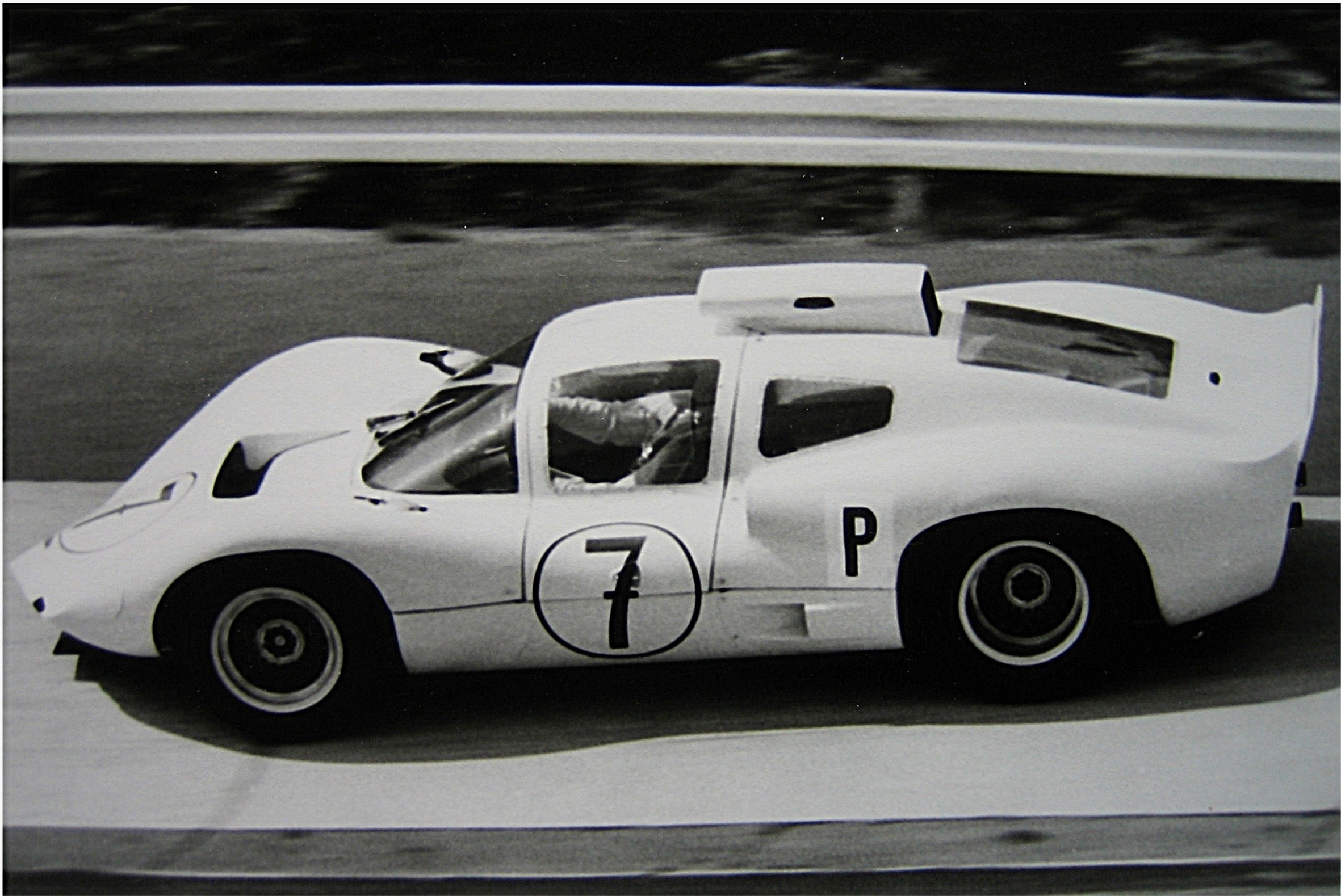
- He later achieved minor victories, including the 1971 1000 km of Barcelona at Montjuïc with Ronnie Peterson, and the 1972 4 Hours of Le Mans with Hughes de Fierlant.
3.2.2. 24 Hours of Le Mans
Bonnier participated in 13 editions of the prestigious 24 Hours of Le Mans endurance race, starting in 1957. His most notable performance came in 1964 when he secured a second-place finish overall, co-driving a Ferrari 330P with Graham Hill. Despite numerous entries with various teams including Maserati, Porsche, Ferrari, and Chaparral, the 1964 race remained his best result at Le Mans.
3.2.3. Can-Am and European Sportscar Championship
In 1968, Bonnier purchased a McLaren M6B to compete in the Can-Am series. His debut outing at the Karlskoga Sweden Grand Prix saw him clinch pole position, though an off-course excursion on the first lap resulted in a second-place finish behind David Piper in a Ferrari 330P3/4. He subsequently raced his McLaren in five of the six Can-Am events that season, with his best finish being an eighth place at Las Vegas. Despite being plagued by mechanical issues for most of the season, he managed to secure third place in the M6B at the Mt Fuji 200-mile race.
In 1970, Bonnier showcased his versatility by driving a Lola T210 to victory in the European 2-Litre Sportscar Championship. His consistent performance throughout the season earned him the drivers' title with 48 points.
4. Other Activities and Roles
Beyond his driving accomplishments, Jo Bonnier made significant contributions to the world of motorsport through his leadership and advocacy, particularly concerning driver safety.
4.1. Team Management
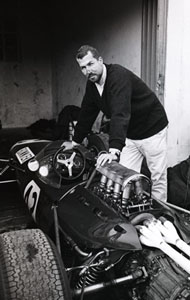
By the early 1970s, Bonnier began to shift his focus from full-time driving to team management. He took a leading role in overseeing his own racing team, Ecurie Bonnier, entering several cars in World Sportscar Championship events. This endeavor showcased his entrepreneurial spirit and his dedication to motorsport beyond the cockpit, demonstrating his capacity for strategic leadership.
4.2. Safety Advocacy
Jo Bonnier was a passionate and instrumental advocate for improved safety standards in motor racing. As the chairman of the Grand Prix Drivers' Association (GPDA), a role he held until his death, he spearheaded efforts to make tracks and cars safer for drivers. His intellectual approach and influence among his peers allowed him to push for crucial changes that contributed to the ongoing evolution of safety protocols in the sport, leaving a lasting positive impact on driver welfare.
5. Personal Life and Anecdotes
Jo Bonnier was known for more than just his racing prowess; his personality and intellectual qualities set him apart in the competitive world of motorsport.
5.1. Personality and Intellectual Acumen
Bonnier had a reputation as a highly intelligent and sophisticated driver. His ability to speak six languages fluently, along with his cultured background, distinguished him from many of his contemporaries in the racing world. He was known for his distinct approach to racing and life, characterized by thoughtfulness and a unique charm that earned him the respect and affection of his colleagues. He was perceived as an intellectual among drivers, an attribute that also contributed to his influence in leadership roles like the GPDA.
5.2. Notable Anecdotes
Among the well-known anecdotes about Jo Bonnier is his role in naming Damon Hill, the future Formula One World Champion and son of Bonnier's former BRM teammate, Graham Hill. This anecdote highlights the close relationships and camaraderie that existed within the racing community of that era.
6. Relationship with Honda
Jo Bonnier had unique and notable interactions with the Honda Formula One program, reflecting his influence and the respect he commanded within the sport.
In 1964, when Honda aimed to make their Formula One debut at the 1964 German Grand Prix with new driver Ronnie Bucknum and their self-developed Honda RA271 car, Bonnier, then chairman of the Grand Prix Drivers' Association (GPDA), voiced strong opposition. He argued that it was excessively reckless and dangerous for a new team to enter the challenging Nürburgring circuit with an inexperienced driver. Despite his protests, Honda proceeded with their debut.
Four years later, at the 1968 Mexican Grand Prix, an incident highlighted the mutual respect within the F1 paddock. During the second day of practice, Bonnier's McLaren M5A suffered a broken BRM V12 engine. In an unexpected move, he requested to borrow a spare car from Honda. The Japanese team, which was on the verge of temporarily withdrawing from Formula One activities, provided him with their second Honda RA301 chassis. Bonnier successfully qualified and competed in the race, finishing in fifth place. This result provided Honda with a points finish in what was to be their last Grand Prix for several years, a gesture that underscored Bonnier's resourcefulness and standing in the sport.
7. Death
Jo Bonnier's life ended tragically during the 1972 24 Hours of Le Mans, a race he had entered 13 times and dearly wished to win. On 11 June 1972, during the race, his open-top Lola T280-Cosworth sports prototype collided with a Ferrari Daytona driven by Swiss amateur driver Florian Vetsch. The accident occurred on the long straight section between Mulsanne Corner and Indianapolis.
The impact caused Bonnier's car to be violently propelled over the Armco barriers and into a dense cluster of trees alongside the track. He was killed instantly upon impact. According to Vic Elford, another driver who had stopped his factory-entered Alfa Romeo Tipo 33 to help Vetsch escape his burning Ferrari, Bonnier's Lola was last seen "spinning into the trees like a helicopter," vividly describing the catastrophic nature of the crash. The incident underscored the significant dangers that still existed in motorsport during that era, despite Bonnier's own efforts to improve safety standards.
8. Racing Record
8.1. Complete Formula One World Championship Results
(Races in bold indicate pole position) (Races in italics indicate fastest lap)
| Year | Entrant | Chassis | Engine | 1 | 2 | 3 | 4 | 5 | 6 | 7 | 8 | 9 | 10 | 11 | 12 | 13 | WDC | Pts |
|---|---|---|---|---|---|---|---|---|---|---|---|---|---|---|---|---|---|---|
| 1956 | Officine Alfieri Maserati | Maserati 250F | Maserati 250F1 2.5 L L6 | ARG | MON | 500 | BEL | FRA | GBR | GER | Ret | NC | 0 | |||||
| 1957 | Scuderia Centro Sud | Maserati 250F | Maserati 250F1 2.5 L L6 | 7 | Ret | Ret | NC | 0 | ||||||||||
| Jo Bonnier | DNA | 500 | FRA | Ret | GER | |||||||||||||
| 1958 | Scuderia Centro Sud | Maserati 250F | Maserati 250F1 2.5 L L6 | DNA | Ret | 20th | 3 | |||||||||||
| Jo Bonnier | Ret | 10 | 500 | 9 | Ret | Ret | ||||||||||||
| Giorgio Scarlatti | 8 | |||||||||||||||||
| Owen Racing Organisation | BRM P25 | BRM P25 2.5 L L4 | Ret | 4 | ||||||||||||||
| 1959 | Owen Racing Organisation | BRM P25 | BRM P25 2.5 L L4 | Ret | 500 | 1 | Ret | Ret | 5 | Ret | 8 | USA | 8th | 10 | ||||
| 1960 | Owen Racing Organisation | BRM P25 | BRM P25 2.5 L L4 | 7 | 18th | 4 | ||||||||||||
| BRM P48 | 5 | 500 | Ret | Ret | Ret | Ret | Ret | ITA | 5 | |||||||||
| 1961 | Porsche System Engineering | Porsche 787 | Porsche 547/3 1.5 L F4 | 12 | 11 | 15th | 3 | |||||||||||
| Porsche 718 | 7 | 7 | 5 | Ret | Ret | 6 | ||||||||||||
| 1962 | Porsche System Engineering | Porsche 804 | Porsche 753 1.5 L F8 | 7 | WD | 10 | Ret | 7 | 6 | 13 | RSA | 15th | 3 | |||||
| Porsche 718 | Porsche 547/3 1.5 L F4 | 5 | ||||||||||||||||
| 1963 | R.R.C. Walker Racing Team | Cooper T60 | Climax FWMV {{cvt|1.5|L}} V8 | 7 | 5 | 11 | NC | 11th | 6 | |||||||||
| Cooper T66 | Ret | 6 | 7 | 8 | 5 | 6 | ||||||||||||
| 1964 | R.R.C. Walker Racing Team | Cooper T66 | Climax FWMV 1.5 L V8 | 5 | 15th | 3 | ||||||||||||
| Brabham BT11 | BRM P56 1.5 L V8 | 9 | Ret | FRA | Ret | Ret | ||||||||||||
| Brabham BT7 | Climax FWMV 1.5 L V8 | 6 | 12 | Ret | Ret | |||||||||||||
| 1965 | R.R.C. Walker Racing Team | Brabham BT7 | Climax FWMV 1.5 L V8 | Ret | 7 | Ret | Ret | 7 | Ret | 7 | 7 | 8 | Ret | NC | 0 | |||
| 1966 | Anglo-Suisse Racing Team | Cooper T81 | Maserati 9/F1 3 L V12 | NC | Ret | 7 | Ret | Ret | NC | 6 | 17th | 1 | ||||||
| Brabham BT22 | Climax FPF {{cvt|2.8|L}} L4 | NC | ||||||||||||||||
| Brabham BT7 | Climax FWMV 1.5 L V8 | Ret | ||||||||||||||||
| 1967 | Joakim Bonnier Racing Team | Cooper T81 | Maserati 9/F1 3 L V12 | Ret | MON | NED | Ret | FRA | Ret | 6 | 8 | Ret | 6 | 10 | 15th | 3 | ||
| 1968 | Joakim Bonnier Racing Team | Cooper T81 | Maserati 9/F1 3 L V12 | Ret | 22nd | 3 | ||||||||||||
| McLaren M5A | BRM P101 3 L V12 | DNA | DNQ | Ret | 8 | FRA | Ret | DNA | 6 | Ret | NC | |||||||
| Honda RA301 | Honda RA301E 3 L V12 | 5 | ||||||||||||||||
| 1969 | Ecurie Bonnier | Lotus 63 | Ford Cosworth DFV 3 L V8 | RSA | ESP | MON | NED | FRA | Ret | NC | 0 | |||||||
| Lotus 49B | Ret | ITA | CAN | USA | MEX | |||||||||||||
| 1970 | Ecurie Bonnier | McLaren M7C | Ford Cosworth DFV 3 L V8 | RSA | ESP | MON | BEL | NED | FRA | GBR | GER | AUT | DNQ | CAN | Ret | MEX | NC | 0 |
| 1971 | Ecurie Bonnier | McLaren M7C | Ford Cosworth DFV 3 L V8 | Ret | ESP | MON | NED | FRA | GBR | DNQ | DNS | 10 | CAN | 16 | NC | 0 |
Bonnier was 6th at the 1967 German Grand Prix but was awarded points for 5th place because Formula Two drivers competing in the same race were ineligible to score points.
8.2. Complete Formula One Non-Championship Results
(Races in bold indicate pole position) (Races in italics indicate fastest lap)
| Year | Entrant | Chassis | Engine | 1 | 2 | 3 | 4 | 5 | 6 | 7 | 8 | 9 | 10 | 11 | 12 | 13 | 14 | 15 | 16 | 17 | 18 | 19 | 20 | 21 |
|---|---|---|---|---|---|---|---|---|---|---|---|---|---|---|---|---|---|---|---|---|---|---|---|---|
| 1957 | Jo Bonnier | Maserati 250F | Maserati 250F1 2.5 L L6 | SYR | PAU | GLV | NAP | Ret | 4 | |||||||||||||||
| Scuderia Centro Sud | 4 | |||||||||||||||||||||||
| Owen Racing Organisation | BRM P25 | BRM P25 2.5 L L4 | Ret | MOR | ||||||||||||||||||||
| 1958 | Jo Bonnier | Maserati 250F | Maserati 250F1 2.5 L L6 | GLV | 2 | AIN | Ret | 2 | ||||||||||||||||
| 1959 | Owen Racing Organisation | BRM P25 | BRM P25 2.5 L L4 | 4 | Ret | INT | DNA | SIL | ||||||||||||||||
| 1960 | Owen Racing Organisation | BRM P25 | BRM P25 2.5 L L4 | 6 | ||||||||||||||||||||
| BRM P48 | Ret | SIL | 3 | 5 | ||||||||||||||||||||
| 1961 | Scuderia Colonia | Lotus 18 | Climax FPF {{cvt|1.5|L}} L4 | LOM | GLV | 2 | WD | AIN | ||||||||||||||||
| Porsche System Engineering | Porsche 718 | Porsche 547/3 1.5 L F4 | Ret | 3 | NAP | LON | 2 | 2 | DAN | 2 | 3 | WD | LEW | VAL | 3 | 3 | 3 | |||||||
| UDT-Laystall Racing | Lotus 18/21 | Climax FPF 1.5 L L4 | 11 | |||||||||||||||||||||
| 1962 | Porsche System Engineering | Porsche 718 | Porsche 547/3 1.5 L F4 | 3 | ||||||||||||||||||||
| Scuderia SSS Republica di Venezia | 2 | 3 | LAV | GLV | 12 | AIN | 12 | NAP | 6 | CLP | 8 | |||||||||||||
| Porsche System Engineering | Porsche 804 | Porsche 753 1.5 L F8 | 2 | 3 | MED | DAN | DNA | RAN | NAT | |||||||||||||||
| R.R.C. Walker Racing Team | Lotus 24 | Climax FWMV 1.5 L V8 | Ret | |||||||||||||||||||||
| 1963 | R.R.C. Walker Racing Team | Cooper T60 | Climax FWMV 1.5 L V8 | LOM | GLV | Ret | Ret | 5 | ROM | 9 | 4 | Ret | ||||||||||||
| Lotus 24 | 5 | AIN | ||||||||||||||||||||||
| Cooper T66 | 5 | Ret | RAN | |||||||||||||||||||||
| 1964 | R.R.C. Walker Racing Team | Cooper T66 | Climax FWMV 1.5 L V8 | 2 | Ret | 4 | 4 | 16 | ||||||||||||||||
| Brabham BT11 | BRM P56 1.5 L V8 | 5 | MED | RAN | ||||||||||||||||||||
| 1965 | R.R.C. Walker Racing Team | Brabham BT7 | Climax FWMV 1.5 L V8 | 3 | 4 | 5 | 5 | Ret | ||||||||||||||||
| Lotus 25 | Ret | |||||||||||||||||||||||
| 1966 | R.R.C. Walker Racing Team | Lotus 25 | Climax FWMV 1.5 L V8 | Ret | ||||||||||||||||||||
| Brabham BT11 | BRM P60 2 L V8 | 5 | ||||||||||||||||||||||
| Anglo-Suisse Racing Team | Cooper T81 | Maserati 9/F1 3 L V12 | 3 | OUL | ||||||||||||||||||||
| 1967 | Joakim Bonnier Racing Team | Cooper T81 | Maserati 9/F1 3 L V12 | ROC | SPR | Ret | 5 | OUL | ESP | |||||||||||||||
| 1968 | Joakim Bonnier Racing Team | McLaren M5A | BRM P101 3 L V12 | Ret | Ret | Ret | ||||||||||||||||||
| 1969 | Ecurie Bonnier | Lotus 49B | Ford Cosworth DFV 3 L V8 | ROC | INT | MAD | DNS | |||||||||||||||||
| 1971 | Ecurie Bonnier | Lola T190 (F5000) | Chevrolet 5 L V8 | NC | ROC | QUE | SPR | INT | RIN | OUL | VIC |
8.3. Complete 24 Hours of Le Mans Results
| Year | Team | Co-Drivers | Car | Class | Laps | Pos. | Class Pos. |
|---|---|---|---|---|---|---|---|
| 1957 | Officine Alfieri Maserati | Giorgio Scarlatti | Maserati 300S | S 3.0 | 73 | DNF | DNF |
| 1958 | Francisco Godia | Francisco Godia-Sales | Maserati 300S | S 3.0 | 142 | DNF | DNF |
| 1959 | Porsche KG | Wolfgang von Trips | Porsche 718 RSK | S 2.0 | 182 | DNF | DNF |
| 1960 | Porsche KG | Graham Hill | Porsche 718/4 RS | S 2.0 | 191 | DNF | DNF |
| 1961 | Porsche System Engineering | Dan Gurney | Porsche 718/4 RS Coupe | S 2.0 | 262 | DNF | DNF |
| 1962 | Scuderia SSS Republica di Venezia | Dan Gurney | Ferrari 250 TRI/61 | E 3.0 | 30 | DNF | DNF |
| 1963 | Porsche System Engineering | Tony Maggs | Porsche 718/8 GTR Coupe | P 3.0 | 109 | DNF | DNF |
| 1964 | Maranello Concessionaires | Graham Hill | Ferrari 330P | P 5.0 | 344 | 2nd | 2nd |
| 1965 | Maranello Concessionaires Ltd. | David Piper | Ferrari 365 P2 | P 5.0 | 101 | DNF | DNF |
| 1966 | Chaparral Cars Inc. | Phil Hill | Chaparral 2D-Chevrolet | P+5.0 | 111 | DNF | DNF |
| 1969 | Scuderia Filipinetti | Masten Gregory | Lola T70 Mk.IIIB-Chevrolet | S 5.0 | 134 | DNF | DNF |
| 1970 | Scuderia Filipinetti | Reine Wisell | Ferrari 512S | S 5.0 | 36 | DNF | DNF |
| 1972 | Ecurie Bonnier Switzerland | Gérard Larrousse Gijs van Lennep | Lola T280-Ford Cosworth | S 3.0 | 213 | DNF | DNF |
8.4. Complete Canadian-American Challenge Cup Results
(Races in bold indicate pole position) (Races in italics indicate fastest lap)
| Year | Team | Car | Engine | 1 | 2 | 3 | 4 | 5 | 6 | 7 | 8 | 9 | 10 | 11 | Pos | Pts |
|---|---|---|---|---|---|---|---|---|---|---|---|---|---|---|---|---|
| 1968 | Ecurie Suisse | McLaren M6B | Chevrolet | 18 | Ret | Ret | Ret | 8 | NC | 0 | ||||||
| 1969 | Scuderia Filipinetti | Lola T70 Mk.3B | Chevrolet | 7 | 27th | 4 | ||||||||||
| 1970 | Ecurie Bonnier | Lola T70 Mk.3B | Chevrolet | MOS | MTR | 11 | EDM | MDO | ROA | ATL | BRA | LAG | RIV | NC | 0 |